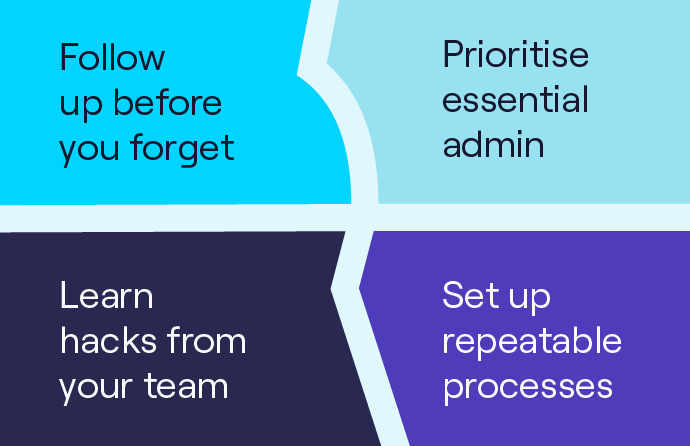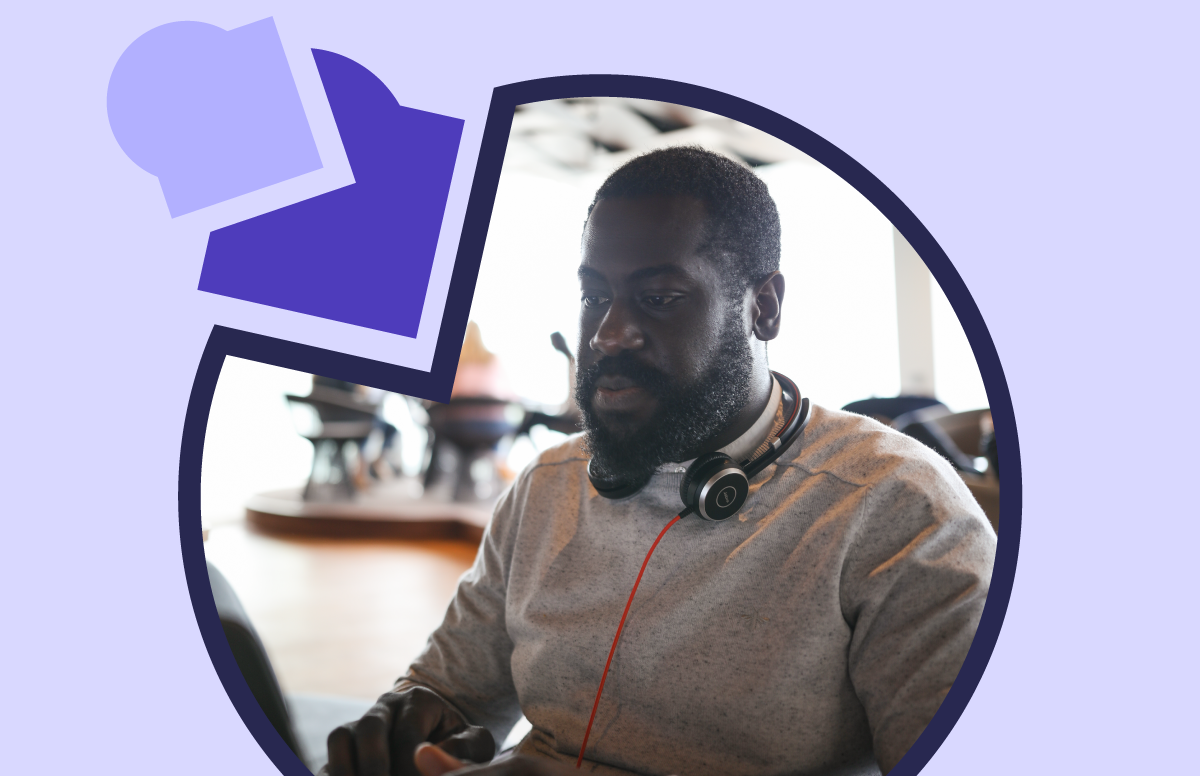Email Funnel: Strategy, Examples and Template
Email funnel resources on this page:
“How about a game of Email Funnel? It’s the latest craze and fun for the whole marketing family…even sales will love it!”
Nowadays, doing B2B marketing can feel like playing a crazy board game. The rules constantly change, and the difficulty level is super hard.
However, when you think about the “game” we play, the objective is clear: move your tokens (leads) along a series of stages to reach the end square of Loyal Customer.
Knowing how to use a funnel is vital to email marketing. In this article, we’ll examine what’s involved and provide instructions on how to play to win.
Ready for your first move? Let’s get the dice rolling 👇
What is an email funnel?
The email funnel is a sequence of email campaigns to guide leads and customers towards conversions. Adapting each email to different stages of the customer journey helps build better connections with your target audience and ensures you’re top of mind when they make a purchasing decision.
Now, imagine you’re playing Monopoly. Initially, you just cruise around the board, picking up properties here and there. But as the game progresses, your strategy becomes more focused. Before you know it, you’re building hotels and raking in the cash.
It takes time and effort to see the returns. An email sales funnel is much the same. It’s about nurturing your relationship with potential customers by providing value at every stage. Each email is a stepping stone in a journey that subtly transports them towards becoming your customer.
By crafting emails that align with your prospects’ current stage in the funnel, you can significantly improve your chances of them converting.
3 successful email funnel examples
Email funnels are essential for B2B companies looking to nurture leads and guide them through the sales process. By sending targeted emails, businesses can engage with potential customers and convert them into paying clients.
Here are three successful email funnel examples that have helped companies drive sales and increase revenue:
1. Cognism’s on demand nurture funnel
Cognism’s email funnel strategy is anything but traditional. The marketing team takes a demand-generation approach, so there’s no doubt our nurtures will do the same!
Nurtures are sent out via email and set up online with a menu on the side to skip to the email content that interests ideal customers the most.
These campaigns tell a story. They move readers along a journey filled with content that resonates and fills any knowledge gaps that may occur when embarking on the hunt for a B2B data provider.
You can view them all on our demand nurture emails hub.
Why did Cognism choose to go this route?
Traditional email marketing for lead generation results in a large number of demos booked but only a small number of quality leads converted. This is because many prospects are rushed into demos they aren’t ready for.
The Cognism team is happy for the right customers to take their time because it leads to higher conversion rates and increased customer loyalty.
So, if you’re looking for an example of an email funnel that’s a little different from most, an on demand nurture campaign is for you.
2. Hotjar’s onboarding email funnel
Hotjar uses an automated email funnel to engage new users and provide them with valuable content and resources.
When someone signs up for a Hotjar account, they receive a series of emails that guide them through the platform’s features and functionalities, helping them get the most out of their experience.
The first email in the sequence welcomes the user to Hotjar and provides a brief overview of what they can expect from the platform. It also includes links to helpful resources such as video tutorials, blog posts, and FAQs.
The second email focuses on Hotjar’s top features, such as heat maps, session recordings, and surveys. It provides tips on using the tool effectively and links to case studies or success stories from other users who have found value in using it.
The third email in the sequence encourages users to explore ways to use Hotjar to improve website performance, such as optimising conversion rates, identifying usability issues, or gathering feedback from visitors.
Throughout the onboarding email funnel, Hotjar includes calls to action to encourage users to take specific actions, such as setting up their first heatmap or starting a session recording. They also encourage users to contact their support team with questions or for assistance.
Overall, Hotjar designed its email funnel to educate and engage new users, helping them understand the platform’s value and encouraging them to explore its features further.
3. Adobe’s upsell email funnel
Adobe’s upsell email funnel encourages existing customers to upgrade to a higher-tiered plan or purchase additional products or services.
The first email in the sequence may highlight the benefits of upgrading, such as access to new features or increased storage capacity.
Take this email about their illustration animation feature as an example:
Subsequent emails may offer exclusive discounts or promotions for upgrading, as well as case studies or success stories from customers who have already made the switch.
By targeting existing customers with personalised and relevant upsell offers, Adobe can increase customer lifetime value and drive additional revenue.
These successful B2B email funnel examples demonstrate the power of targeted and strategic email marketing to drive sales and increase customer engagement.
By understanding your audience and their needs, creating valuable content, and using automation to deliver personalised messages, you can effectively guide email leads through the sales funnel and ultimately convert them into loyal customers.
Consider implementing some of these email funnel strategies in your B2B marketing efforts to see improved results and a higher ROI.
How to create an email funnel?
You’ll need to consider six stages for an email conversion funnel to work.
Think of your email sales funnel as an intricate board game. Each stage is a critical checkpoint your potential B2B customers must pass through before reaching the end goal of closing a deal.
Here’s how you can create an email funnel based on each stage:
1. Awareness stage
Imagine this as the first roll of the dice. Your goal is to get on the radar of potential clients and make them aware of who you are and what you offer.
By laying down a foundation of trust and interest, you’re setting the stage for everything that follows. This involves positioning your business as a thought leader and a solution provider in your industry.
Objective:
Capture the attention of potential business clients with emails that make them aware of your brand.
Key tactics:
- Welcome emails: Send an introductory cold email to new subscribers explaining who you are and what you do.
- Lead magnets: Offer high-value resources like white papers, industry reports, or comprehensive guides in exchange for contact information.
- Educational content: Share blog posts, infographics, and videos about industry pain points and trends to help establish your brand as a thought leader.
2. Interest stage
In a board game, this is where players start moving their pieces and exploring options.
Similarly, in the interest stage of the cold email funnel, your potential clients engage with your content and consider how your solutions address their needs.
Your goal here is to nurture their interest and keep them engaged. It’s about deepening their understanding of your offerings and building a relationship.
It’s your chance to provide more targeted information and demonstrate the relevance of your solutions.
Objective:
Build interest by creating emails that provide valuable and relevant content that keeps prospects engaged.
Key tactics:
- Educational series: Send an email sequence that provides deeper insights into industry-specific issues and your solutions.
- Case studies: Share detailed accounts of how your products or services have solved problems for other businesses.
- Webinars and live demos: Invite them to interactive sessions where you demo your solutions in action and answer questions.
3. Decision stage
Next, your potential clients evaluate different solutions and decide which one best suits their needs. They weigh their options and compare features, benefits, and costs.
Your role here is to tip the scales in your favour by clearly demonstrating why your product or service is the best choice.
This involves addressing any concerns or sales objections and highlighting your unique value propositions. It’s about making their decision easier by providing all the necessary information.
Objective:
Create emails that showcase the benefits of your solutions and address any concerns or objections to help them make an informed decision.
Key tactics:
- Product comparisons: Provide detailed comparisons highlighting the advantages of your solutions over those of your competitors.
- Testimonials and reviews: Share testimonials, reviews, and other positive feedback from other businesses to build trust and credibility.
- Special offers: Offer incentives like discounts, free trials, or customised proposals to encourage a decision.
4. Action stage
This is the pinnacle of the game, where all your strategies and moves culminate in a decisive action.
In the action stage of the email sales funnel, your potential clients are ready to purchase or enter into a business agreement. You need to facilitate a smooth transition from interest to action.
Your goal is to ensure that the closing process is as straightforward and enticing as possible. Clear calls to action, timely follow-ups, and addressing last-minute doubts are crucial here. This stage is about making it easy for your prospects to say yes.
Objective:
Create emails that make it easy for interested prospects to take action and urge them to become paying clients or partners.
Key tactics:
- Clear Calls to Action (CTAs): Use strong, unambiguous CTAs that direct prospects to take the next step, whether scheduling a consultation or signing a contract.
- Abandoned cart emails: Send reminders for incomplete actions such as pending proposal reviews or unfinished demo sign-ups.
- Urgency and scarcity: Utilise tactics like limited-time offers or exclusive deals to prompt immediate action.
5. Retention stage
Just like bonus rounds in a board game keep players engaged and excited, this stage is about maintaining the relationship with your clients and ensuring they continue to see value in your partnership. It focuses on client satisfaction, ongoing engagement, and loyalty.
For your email funnel template to work, you must make your clients feel valued and supported, turning them into repeat customers and long-term partners. By maintaining ongoing value, you strengthen your connection.
Objective:
Maintain client engagement and loyalty with emails that affirm their decision, provide after-sales support, and upsell more of your offerings.
Key tactics:
- Onboarding series: Send a series of emails to help new clients get started with your solutions and maximise their value.
- Follow-up emails: Regularly check in with clients to offer additional tips, solicit feedback, and introduce new features or services.
- Exclusive offers: Reward loyal clients with exclusive discounts, early access to new products, or special promotions.
6. Advocacy stage
When you feel good about winning the game, there’s nothing wrong with sharing your success and excitement with others.
The advocacy stage involves turning satisfied clients into brand ambassadors who will recommend your solutions to their networks.
You must encourage happy clients to spread the word about their positive experiences, bringing in new business through referrals and testimonials.
Leverage the power of word-of-mouth and social proof to amplify your reach and credibility.
Objective:
Create emails encouraging happy clients to refer you to other businesses and share their positive experiences.
Key tactics:
- Referral programs: Incentivise clients to refer new business to you with rewards or benefits.
- Testimonials requests: Ask satisfied clients to provide testimonials or reviews that you can use in your marketing efforts.
- Social sharing: Encourage clients to share their success stories with your brand on social media and professional networks like LinkedIn.
6 steps for an effective email funnel strategy
Creating an email funnel is easier than you think when you break it down into manageable steps.
Think of it like setting up a chess game:
Each piece has its place and every move matters. You just need to plan carefully and think strategically.
1. Define your goal
Before you even think about typing that first email, ask yourself:
What’s the endgame here?
Are you trying to boost sales, generate leads, or create brand awareness?
Your sales goal will shape your entire email funnel strategy.
Goals could include:
- Increasing sales of a specific product.
- Generating leads for a service-based business.
- Building brand awareness and engagement.
- Driving traffic to your website.
- Increasing attendance for an event or webinar.
2. Understand your audience
You must understand your audience’s needs, preferences, and pain points.
Create detailed buyer personas based on customer data. Know their demographic info, behaviours, and challenges.
The more you know, the better you can tailor your emails to resonate with them.
To understand your audience:
- Conduct surveys and interviews.
- Analyse website and social media analytics.
- Monitor customer feedback and reviews.
- Use tools like Google Analytics and Facebook Insights.
3. Map out your customer journey
Just like planning a cross-country road trip, you need to know where your customers are starting and where they’re heading.
Map out the stages of their journey from first touchpoint to final purchase and beyond.
Stages of the customer journey:
- Awareness: They realise they have a problem or need.
- Consideration: They start looking for solutions.
- Decision: They decide on a solution and make a purchase.
- Retention: They continue to use your product or service.
- Advocacy: They become loyal customers and recommend you to others.
4. Create valuable content
Your emails should offer value relevant to the stage your customer is in. This could be educational content in the awareness stage, detailed product info in the consideration stage, or special offers in the decision stage.
Types of content for each stage:
- Awareness: Blog posts, eBooks, infographics, educational videos.
- Consideration: Case studies, webinars, comparison guides, and product demos.
- Decision: Free trials, special offers, testimonials, product reviews.
5. Set up your email sequence
Set up your email sequence using an automated email marketing tool (such as MailChimp, HubSpot, or ActiveCampaign).
Schedule emails to be sent at optimal times and ensure the content flows logically from one email to the next.
How to set up your email sequence:
- Choose your email marketing platform: Pick a tool that suits your needs and budget.
- Import your email list: Make sure your list is segmented based on different criteria.
- Create your email templates: Design and write the emails for each stage of the funnel.
- Set up automation workflows: Define triggers and actions that automatically send the different emails.
- Test your sequence: Send test emails to ensure everything looks and works as expected.
6. Test and optimise
Don’t set it and forget it. Continuously monitor your email funnel’s performance. Look at open rates, click-through rates, and conversion rates. A/B tests different subject lines, email content, and CTAs. Use the data to refine your strategy.
Key metrics to track:
- Open Rate: The percentage of recipients who open your email. Indicates how compelling your subject lines are.
- Click Through Rate (CTR): The percentage of recipients who click on a link within your email. It shows how engaging your content is.
- Conversion Rate: The percentage of recipients who complete a desired action (e.g., purchasing). Measures the effectiveness of your overall funnel.
- Bounce Rate: The percentage of emails that couldn’t be delivered. It helps identify issues with your email list.
- Unsubscribe Rate: The percentage of recipients who opt out of your email list. Indicates if your content is missing the mark.
Free email funnel template
Capture the attention and win loyal customers with Cognism’s email funnel template 👇





Deliver more emails with Cognism
Craft the best email funnel with accurate and globally compliant emails with lower bounce rates!
“Cognism is the most complete package, having the features we need for filtering and, most importantly, verified emails and phone numbers. We needed the verified email feature so we could sort out the good data from the bad data. There aren’t many tools that have that option.”
Click to book a call with one of our data experts 👇



